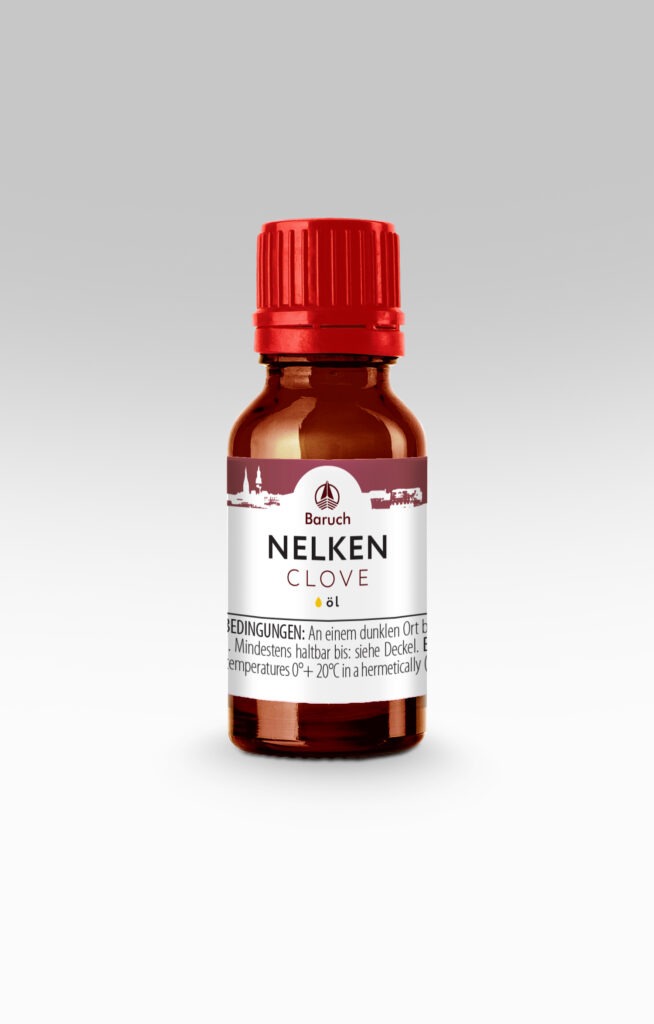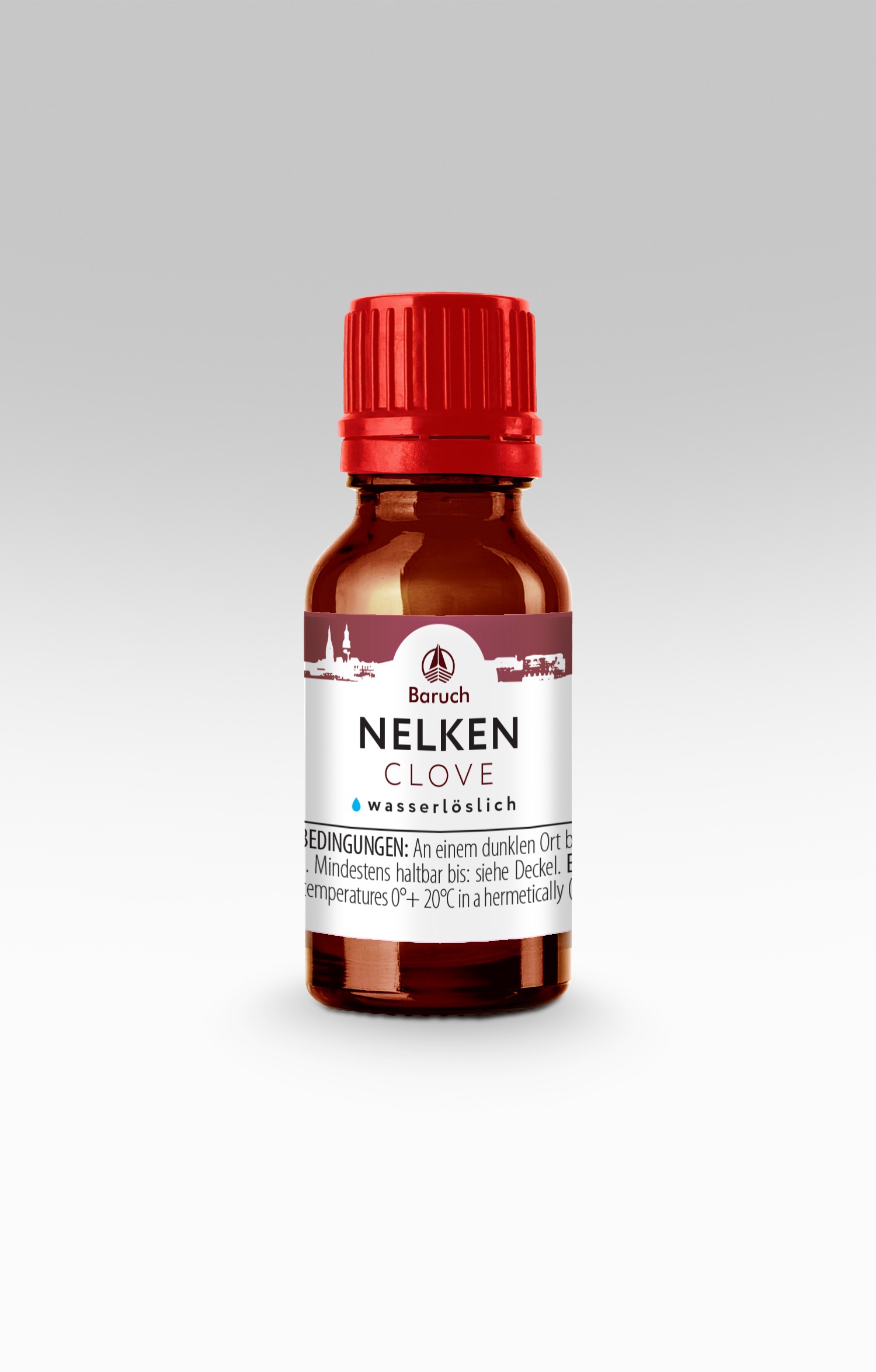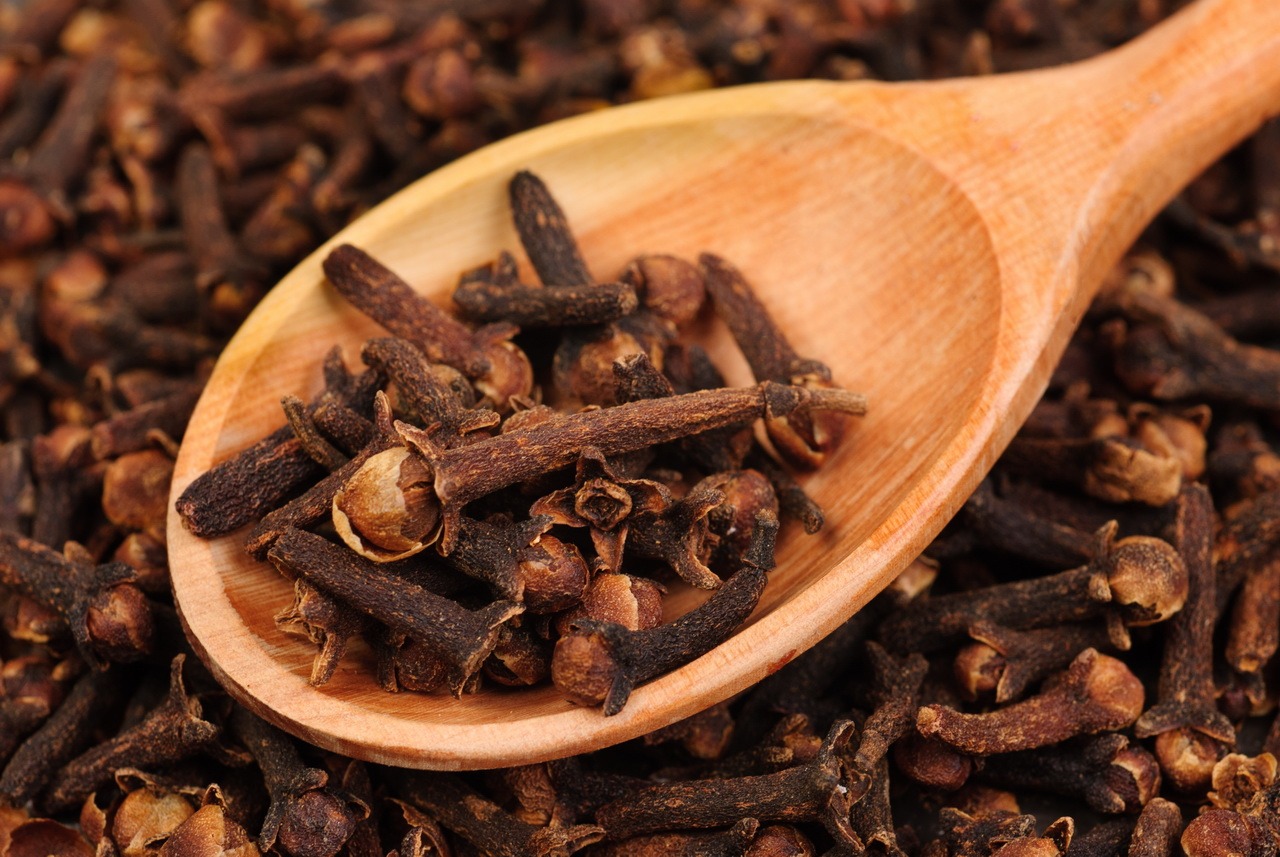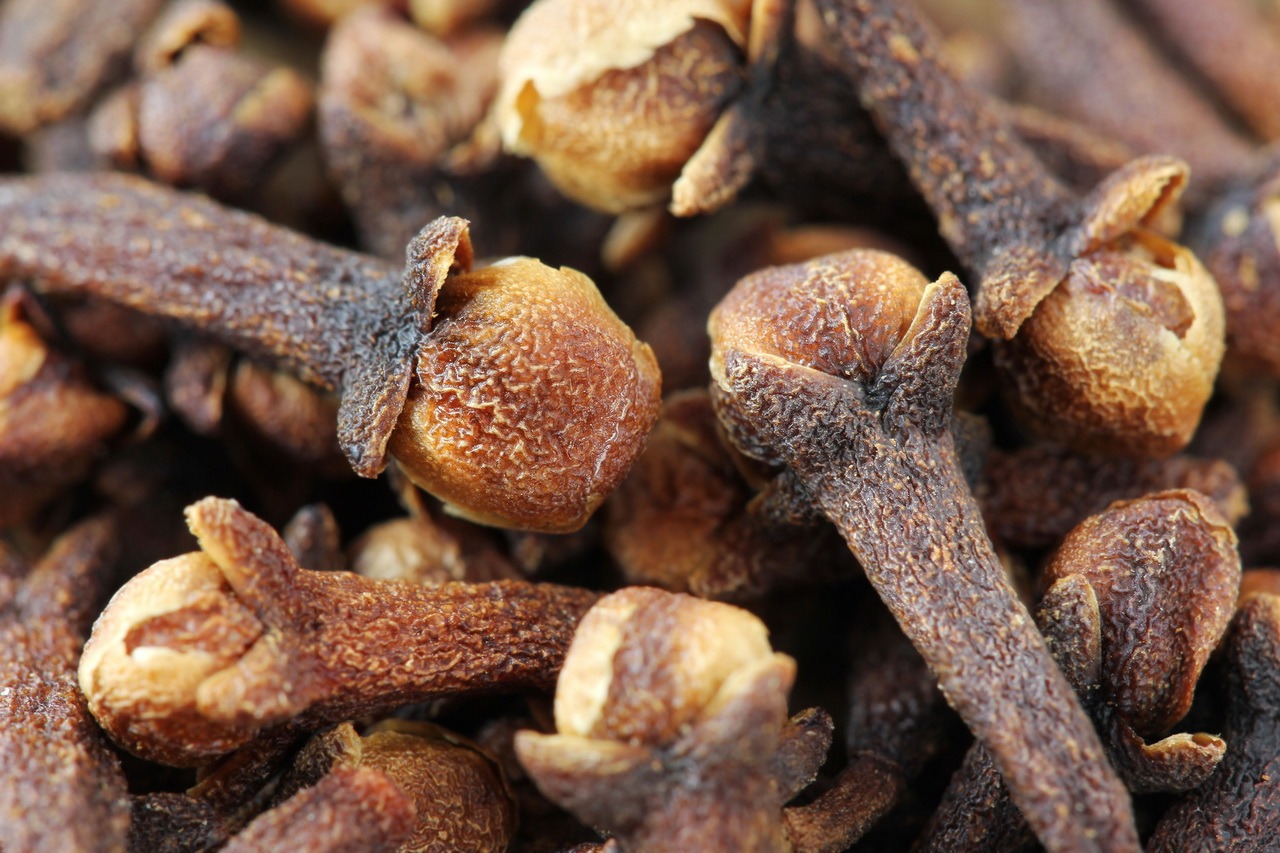Clove CO2 Extract is derived from the flower buds of the clove tree (Syzygium aromaticum), which belongs to the myrtle family and is unrelated to the flowers of the same name. The most well-known use of cloves is as a spice, but what is less well known is that this raw material contains two types of essential oils. A kind of essential oil with a specific gravity larger than that of water and a burning taste is contained in the petioles. The second type, with a lower specific gravity than water and a bright, clove-specific aroma, is contained in the “cap” of the bud. This distribution is based on the principle of assessing the quality of raw materials. With high-quality raw materials, the buds stand vertically in the water and do not swim horizontally. Such control is necessary because cloves lose essential oils very quickly, and after grinding for several hours, more than 70% of the essential oils contained in the raw material are lost.
In the countries of Southeast Asia, the “cap” is very often separated from the stem, depending on the intended use. For example, when flavoring tobacco, only the “caps” are used. And to make a true dry curry mix, only the stalks are used.
In European countries, cloves are most often used as a spice in various marinades. It should be noted that the presence of even minor impurities of alcohol or vinegar in the marinade contributes to the rapid release of burning essential oils from cloves and the preservation of aromatic essential oils in the spice itself. By using CO2 extract, you can avoid this completely because the burning part of essential oils is more polar and does not completely pass into the extract, and the aromatic part completely passes into the CO2 extract. Even if the product contains alcohol or vinegar, it is not preserved and gives the product its full aroma. This allows you to create drinks that have a distinctive taste of clove, but with a rather weak effect of “burning” components.
In almost all pharmacopoeias in the world, extracts from clove buds are used as an ingredient in the production of locally irritating, warming and pain-relieving ointments. As a local anesthetic, clove extract is used in dentistry.
Due to the fact that clove infusions and extracts, when exposed to the skin, can provoke rather severe allergic manifestations, they are rarely used in cosmetic formulations, but the use of these extracts in toothpaste formulations is widespread.
The “light fraction” of clove essential oil and CO2 extract are traditionally used in perfumery to create “oriental” scents.


Chart 1. Main components of CO2 extract from clove buds
| NAME | CONTENT IN% OF THE AMOUNT OF VOLATILE COMPONENTS | EFFECT |
|---|---|---|
| Eugenol | over 54 | Anti-inflammatory, analgesic, dehydrating skin. Warms, removes infections in the upper respiratory tract. |
| Eugenyl acetate | 27 | Antiviral, anthelmintic. |
| β-carriophiles | 10 | Reduces anxiety and stress, an ingredient in perfumery products. |
| α-Homulene | 1 | Transdermal Transporter. |
| Bis-(2ethylhexyl) phthalate | 0,7 | Fragrance component. |
| Carriophilen Oxide | 0,3 | Reduces anxiety and stress, an ingredient in perfumery products. |
During mass spectrometric studies, more than 80 common compounds were found in clove СО2 extract, however, most of the detected compounds were not identified.
In cosmetics, the CO2 extract from cloves is rarely used, but it has significant potential in the production of:
- Products for skin prone to inflammation with antibacterial and antiseptic effects
- Means for increasing skin elasticity, its regeneration and rejuvenation
- Skin moisturizers
- Heat creams for sports massages, they help against injuries and bruises
- Means for oral care and restoration of tooth enamel
- Deodorants
It should be borne in mind that some consumers may react individually to the components of clove contained in cosmetics.
An interesting fact: the essential oil of cloves has been one of the ingredients of the famous Vietnamese ointment “Asterisk” since Soviet times. The analogue of this ointment on CO2 extracts (including the participation of CO2 extracts from cloves) will be fuller and more active in its properties than the original version on essential oils. We have the recipe, please let me know if you are interested in publishing it.
In food production, clove CO2 extract is used in canning and to make some strong alcoholic beverages. Microemulsion of CO2 extract from cloves is an ingredient in popular alcoholic beverages based on red wines – punch, grog and mulled wine. There are also non-alcoholic analogues of these drinks, and they also use a microemulsion of CO2 extract of clove.
The taste of clove goes well with cherry and orange, which opens up the possibility of making a variety of products based on suitable flavor compositions (including cherry or orange framed with a blend of CO2 spice extracts containing CO2 extracts of cloves). We are talking about products such as juices and juice mixtures, yoghurts and ice cream.
Clove CO2 extract is actively used in the confectionery industry, especially for the manufacture of gingerbread and chocolate products, but not only. Cloves are also one of the leading ingredients in the popular confectionery spice mix ‘perfumed dry’, which has found wide application in the manufacture of a variety of sweet treats, most commonly gingerbread and muffins/cookies. This mixture is available in our range as a composition of CO2 extracts. If you are interested in trying them in your products, please contact us, we will send you a sample.
Chart 2. Application amounts, recommendations for use and storage of clove CO2 extract
| Food usage rates | Item A100: 0.002% (20 g per ton) Water-soluble microemulsions EMA1: 0.1% (1 l per 1000 l or 1 ml per liter) |
| Application rates in cosmetics | Item А10: 1-3% Item А100: 0.1-0.3% |
| Recommendations for use | It is recommended to add CO2 extracts in the final stages of preparation, in the cooling phase of the end product. |
| Storage Instructions | It is recommended to store CO2 extracts in a closed container in a cool room and avoid direct sunlight. |
Historical reference

It was the shape of the bud, similar to the flower of the carnation, that gave this spice its European name. In ancient China, especially at imperial receptions, it was mandatory to chew clove buds and hold them in your mouth if you were feeling anxious. In ancient Egypt, carnation buds were braided into funeral wreaths. Arab merchants brought cloves to Europe about 5,000 years ago, and the spice’s routes of delivery were a great mystery. By the time of the First Crusades, Europeans were realizing where oriental spices were being imported from, but it wasn’t until the 13th century that Venetian merchants began shipping spices from India to Europe. However, the “expansion of supply” did not affect their very high prices in the slightest.
